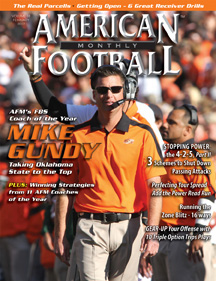Article CategoriesAFM Magazine
|
AFM’s College Coaches of the Yearby: David Purdum© More from this issue Mike Gundy Oklahoma State Gundy led the Cowboys to the greatest year in their history, netting him AFM’s top The visitors’ locker room at Texas A&M is located right next to the entrance that takes you onto the field. Every time the doors open, the visiting locker room is treated to the sounds of Kyle Field, featuring rowdy fans, bands and entertainment. It’s not the most peaceful environment to settle a team down, especially one trailing 20-3 at the half. Somehow, Mike Gundy did it. His Cowboys down 17 in a battle of top-10 Big 12 foes, Gundy knew halftime wasn’t going to be about significant scheme adjustments on either side of the ball. Instead, squashing any signs of panic was more important. Once inside the locker room, he pointed out a couple missed tackles that had re....The full article can only be seen by subscribers.
|
|
|||||||
| HOME |
MAGAZINE |
SUBSCRIBE | ONLINE COLUMNISTS | COACHING VIDEOS |
Copyright 2025, AmericanFootballMonthly.com
All Rights Reserved





